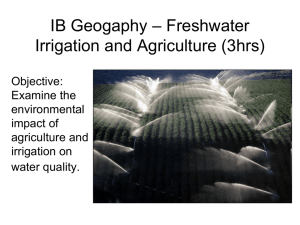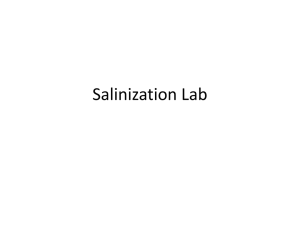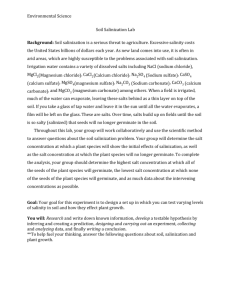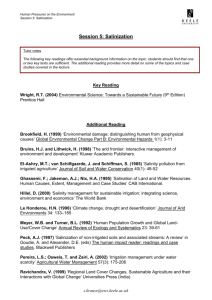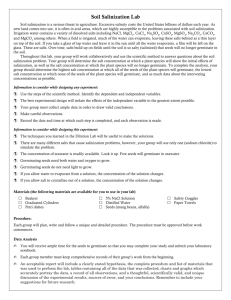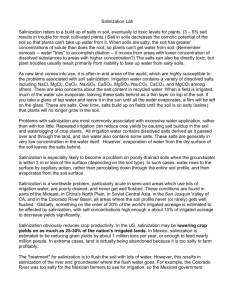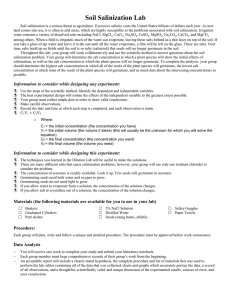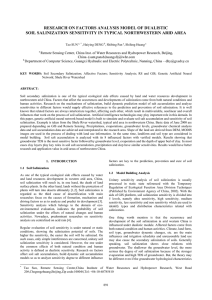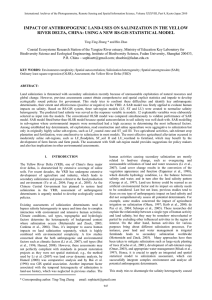9.24-Soil-Salinization-and-Test-Corrections
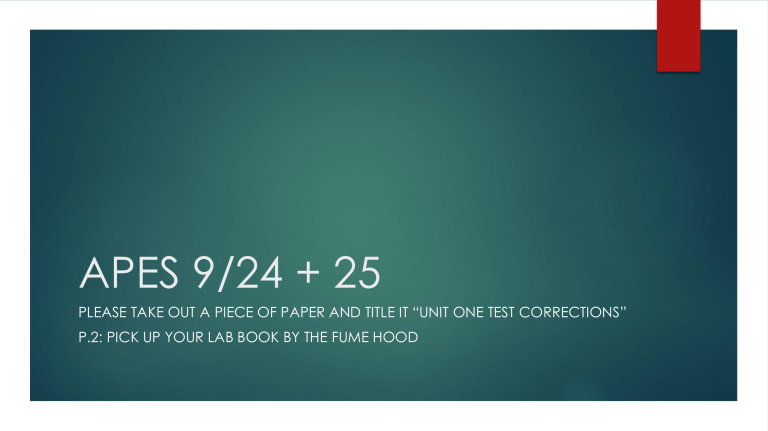
APES 9/24 + 25
PLEASE TAKE OUT A PIECE OF PAPER AND TITLE IT “UNIT ONE TEST CORRECTIONS”
P.2: PICK UP YOUR LAB BOOK BY THE FUME HOOD
Lab Book Check #1
1.
2.
3.
4.
Warm-Ups (out of 3)
Scored for completion only
Chapter 7 Reading Assignment (12 points)
In the future, work in wrong format won’t be scored
Answer q’s A-S, define some terms, answer all MC questions
Middle East Case Studies (5 points)
Significant info for all 5 countries
Tragedy of the Commons Game (6 points)
Data table and questions complete and correct
Unit One Test Results
Multiple Choice (out of 38)
A = 34.5-38
B = 30.5-34
C = 26.5-30
D = 23-26
Retakes for scores of 26 and below today through next Wednesday
Can earn a max of 26.5!
Class average = 75.5%
Short Answer (out of 15)
A = 13.5-15
B = 12-13
C = 10.5-11.5
D = 9-10
Retakes for scores of 10 and below today through next Wednesday
Can earn max of 10.5!
Class Average = 80.9%
Unit One Test Corrections
Worth 10 homework points
For each MC you missed, give me the correct answer and why the answer you chose doesn’t make sense.
Example: 1. C
My answer, B, doesn’t make sense because an ecosystem has to have both living (biotic) and non-living (abiotic) components to function.
Re-answer Short Answer questions
Put in inbox.
Need more time? Come see me before or after school to get your test back.
Soil Salinization Lab
Soil Salinization is the process of salt becoming concentrated in areas where irrigation is used to make soil fertile.
Why? Irrigation water usually come from underground aquifers, which have a lot of minerals dissolved in them. In areas with a dry climate, the water evaporates, leaving behind salts in high levels.
Soil Salinization Lab- in your lab book
1.
Pre-Lab: compare answers 1-10 with your new group. Then, make a flowchart or some other visual representation of the background info.
What causes soil salinization?
What are the negative effects?
Where does it happen?
Somewhere in your visual representation, also include definitions for: irrigation, minerals, salinization, aquifers, osmotic potential, germinating seeds
Soil Salinization Lab
1.
2.
3.
You will test 8 salt solutions, varying in concentration between 0-4%, using the directions at the top of page two and bottom of page 3.
Decide on your concentrations and determine how you will make them as a group. Show calculations for all 8 baggies, with units, in your lab book
(can split this work up)
Discuss a procedure as a group and record a quick rough draft of it.
Do it!
Due next time…
Type up a testable question, hypothesis, procedure, and empty data table in a Google
Doc.
Share it with me before class starts!
thardtke@tahomasd.us

